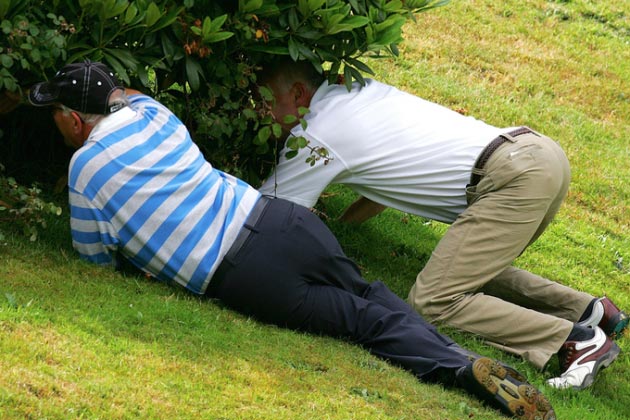
News
The Coomer Corner - What Is My Favorite Golf Ball? A Dry One!

In a published series for NPR, “A Few Things You Didn’t Know,” author Kee Malesky provides some history on the evolution of the golf ball. It is believed by almost all historians that the first game of golf was played with a stick and a rock. There is also evidence that a piece of hardwood was carved into a ball shape not much later. In the early 1600s, a “featherie” became the popular choice and this was the real beginning of the golf ball that we recognize. It was made using wet leather stuffed with wet feathers. When it dries it becomes hard and durable because the leather contracts as it dries, while the feathers expand. There is a problem with this design. If it gets wet, it is ruined. I guess we now understand why any waterway on a golf course was called a hazard! The ball was expensive to make, but in use for more than 200 years.
The next ball on the market was the gutta-percha ball, or "guttie." It was made from the sap of certain tropical trees and was introduced around 1848. Cheaper to produce than “featheries”, this opened the game to less wealthy individuals and helped attract more players. The early gutties were smooth surfaced, but golfers noticed that balls with nicks and scratches tended to fly farther, so soon a variety of dimples and other patterns began to appear. For many years, the bramble design, with inverted dimples that made the ball look like a raspberry, was popular.
By the end of the 19th century, a ball was developed that had a solid rubber core wound with rubber thread and a gutta-percha cover; it was resilient and became the norm. Other experimenters developed balls with a core of mercury, cork, or metal.
Then there was even a "pneumatic" type of design, with a center of compressed air. It’s sort of fun to imagine that in the 1905 British Open that was won by James Braid, he may have used the compressed air ball to beat a field that included Harry Vardon and Willie Park, Jr. I wonder if the Olde Course @ St. Andrews experienced any unexpected exploding golf balls coming up the final hole in front of the clubhouse.
Modern golf balls now use newer man-made materials — polymers, silicone, synthetic rubber — to optimize the aerodynamics and get better distance and spin ratios. With the USGA’s recent announcement for controlling ball distances, even newer technology may just be a chip shot away.
Since we have recently reviewed the rule concerning equipment, I thought this lead-in would best apply to Rule 7 – Ball Search: Finding and Identifying Ball. Obviously, of all the equipment we use to play the game, we can’t play at all without the ball. We don’t have any other options when it comes down to it. Without a ball, we don’t have a game. We also don’t have a score without a ball in play, whether it be the original ball or a substituted ball. Furthermore, if we lose our original ball in play, there’s a chance we could be playing a wrong ball.
So, let’s make sure we start by identifying our ball when we find it where we thought it should be. The act of searching includes the responsibility to do so “fairly”. This provides a guideline that the player should abide by that does not include excessive searching, such as breaking natural objects that improves the conditions affecting the stroke. The act of moving water, sand, loose impediments, movable objects and bending and breaking such objects when “fairly” searching for your ball is allowed. If a violation of this rule occurs, the player will get the general penalty of two strokes.
You always have the opportunity to identify the ball, no matter where the ball is located. The procedure is to mark the ball with a ball marker, rotate or lift the ball, identify it, and replace the ball on the spot from where it was lifted. You may even clean the ball, as much as needed, to identify that it is your ball. Don’t forget to always mark the ball first or a penalty will apply (1 penalty stroke).
Rule 7.4 Ball Accidentally Moved in Trying to Find or Identify It provides clarity of what to do if the ball moves before the search begins. If you move your ball in play, except on the putting green, when you are not making a stroke at it, the penalty is one penalty stroke. The same applies if before you begin searching for your ball, you accidentally move it. But, if you, an opponent, or anyone else are in the act of searching, there is no penalty if the ball moves. Replace the ball either on the spot from which it moved or an estimated spot if the original spot is not known.
This rule also provides how to proceed when a ball is covered with sand. You may take whatever action is needed to find the ball in the sand. Once found, the ball must be re-covered, and the lie re-created as close as possible. A small part of the ball may remain visible when doing so.
Two last bits of knowledge to impart using this golf ball theme. First, just because a ball has “racing stripes” or “range” printed on it, does not make it non-conforming. Some of the finest range balls I have ever been a witness to were sitting in buckets on the practice ground at Valhalla Golf Club during all the PGA Championships and the 2008 Ryder Cup. The USGA has a list longer than the stairs in the Empire State Building and can either be viewed or downloaded at usga.org under the subsection titled Equipment.
Lastly, please purchase a permanent marker in your favorite color, and place an identification mark on your golf balls. Do not make them all the same!






















































